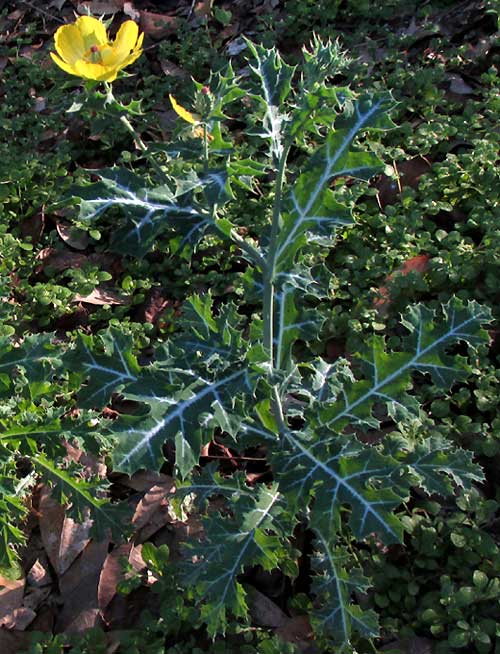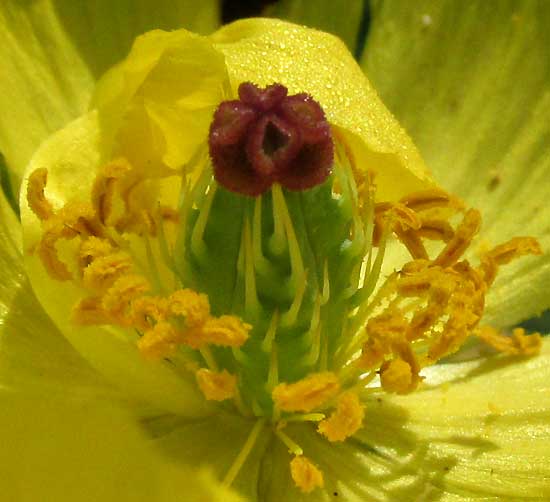Excerpts from Jim Conrad's
Naturalist Newsletter
from the April 3, 2016 Newsletter issued from Hacienda Chichen Resort beside Chichén Itzá Ruins; limestone bedrock; elevation ~39m (~128ft), N20.675°, W88.569°; central Yucatán state, MÉXICO
MEXICAN PRICKLY POPPY
Up in Texas at this time of year we used to admire the yellow-flowered Mexican Prickly Poppies, ARGEMONE MEXICANA, which to many folks there were despised weeds because they were so spiny. Nowadays several Mexican Prickly Poppies somehow have invaded a spot recently cleared to make a parking lot, and the visitors I've taken to seem them usually find them so attractive that they snap a photo or two. Below, you can see one whose egg-size yellow blossom glows in morning sunlight:

A close-up of the flower's interior, featuring a spine-armored ovary topped with a fuzzy, reddish-brown stigma, and surrounded by many stamens with yellow, banana-like anthers splitting to release pollen, is shown below:

Despite the species' names, it's unclear where Mexican Prickly Poppies originally came from, for now they're spread throughout most of the world's tropics and subtropics. Nowhere do farmers and ranchers like them, and it's not only for their prickliness. For one thing, they produce chemicals that retard seed germination and seedling growth of many cultivated plants, a phenomenon known as allelopathy. Harmful allelopathic effects of Mexican Prickly Poppies have been documented on germination and seedling vigor of wheat, mustard, sorghum, tomato, cucumber and many other useful plants.
Despite all that, most pages on the Internet concerning Mexican Prickly Poppy deal with the plant's medicinal and psychotrophic uses. Some people smoke the leaves to feel relaxed or have highs of various kinds, the effects being similar to those of opium, the Opium Poppy being in the same family as prickly poppies. Mexico's Aztecs used this species extensively in rituals. In today's drug culture, some regard Mexican Prickly Poppy as a "teacher plant," a plant whose use engenders deep insight. In the Caribbean, plasters made from the plant are used to remove warts. In fact, the plant finds all kinds of uses in many cultures throughout the world.